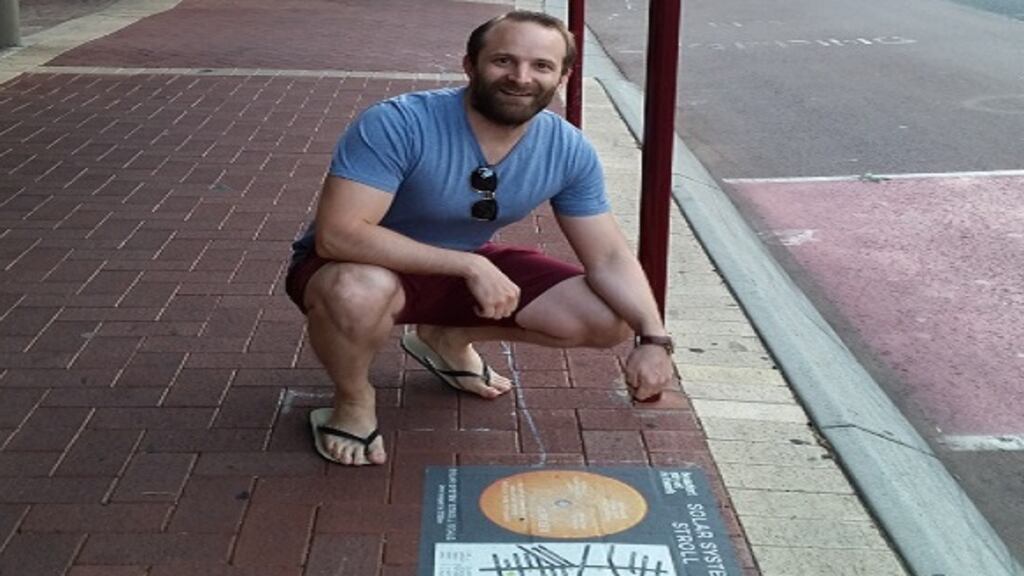Perth's Beaufort Street is named after Irishman Francis Beaufort, the British navy hydrographer famous for creating the well-established wind-force scale. Beaufort was also the man who sanctioned the appointment of Charles Darwin to the HMS Beagle in a scientific capacity. Darwin of course later reported on his Beagle observations in his masterwork On the Origin of Species.
This month, in that same spirit of science and exploration in which the place was named, Beaufort Street has been adorned with the Solar System Stroll. The scaled down model of the solar system even includes the controversial Pluto, which is no longer considered a planet because of its size and location in space. The project’s creator is Dublin’s Rory Deegan.
“Models of the solar system are often built in compact environments for ease of presentation. But this format can be misleading. In fact, even on a scaled down model, 1.2km in length, Pluto would be just 0.4mm in diameter, and the sun just 25cm,” Rory explains.
He continues “Not only are the planets and sun relatively small, but they’re also separated by huge distances. On a scale where 1mm is equal to 3,725km, Mars is still a full 110m away from the next planet, Jupiter.”
To show this on a grand scale, more suitable for the public appreciation of the size of our solar system, Rory has put together the Beaufort Street Solar System Stroll. The stroll consists of a series of nine pavement stickers, each showing the relative size of a planet to the sun, spread out over a 1.2km length on the popular street.
“The stroll allows people to walk the street and get a real sense for the size of the planets and the space between them,” he says. “We decided to keep Pluto because we love Pluto!”
Having moved to Australia five years ago, Rory has worked in digital marketing, but has recently moved into online marketing management. He is also an entrepreneur, having created a range of websites and services including toptenperth.com.au and www.toptenbali.com for the popular tourist destination visited by tens of thousands of Australians each year.
So how did Rory develop the idea for the solar system stroll?
“I have always been fascinated by all aspects of science, and recently it was the sheer size of the solar system which had been consuming me. I also wanted to do something like this so to contribute to the public understanding of science. I love the idea of someone framing a lazy afternoon along the stroll.”
The model solar system along the pavement of one of Perth’s most popular locations is set to draw thousands of visitors. This public attraction is an interesting work of scientific outreach and education; an engaging activity that can be enjoyed by both tourists and locals. Such scientific outreach is encouraged by the scientific community itself, and these acts of citizen science truly embrace the spirit of public education.
“I’d really love to do something similar for a timeline of life on Earth,” he says. “If someone could facilitate it, I’d like to show a timeline on the street of how we went from the big bang to where we are today; including major events like the creation of Earth, the beginning of life, the major extinctions, and so on to the appearance of humans.”
Rory and his girlfriend Finola are happy for now in Australia, but do not rule out the possibility of a return to Ireland in the future.
Perth's Solar System Stroll will be in place for at least three years. For more, see beaufortstreet.com.au/solar-system-stroll.
Dr Conor Purcell is a postdoctoral fellow at the Earth Institute, University College Dublin, and a science writer. He tweets @ClimateGuruNet and writes at cppurcell.tumblr.com











